Phone Call with Don Hazlitt
Ron Morosan
September 2021
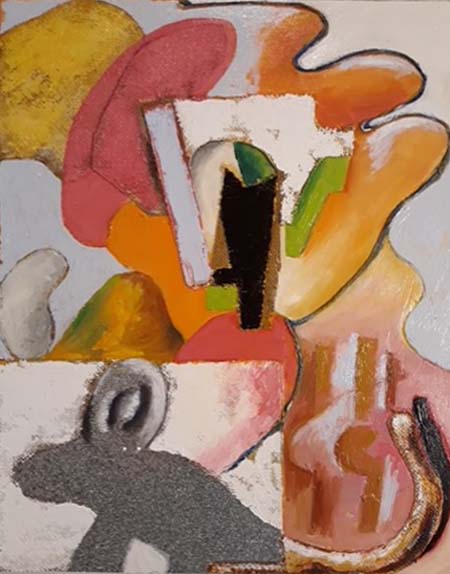 Dan Hazlitt, Rat, 2021, oil on canvas
Dan Hazlitt, Rat, 2021, oil on canvas
Last Friday Don Hazlitt called me from Corpus Christi, Texas, where he moved almost a year ago when he stopped teaching at Molloy College and decided to be with his dear sweetheart Isabelle.
We talked for over an hour and it was a whopping good time. It made me realize what all of us miss when we text and email, like proper functionaries, to keep in touch with friends. Texting always makes me feel like I’m sending office memos. Email is also a remote feeling like I’m sending office communications while working for a corporation. Sometimes I ask myself, ”Am I working for Google or Apple?”
My telephone call with Don was lively and spontaneous. We laughed, interrupted each other, reminisced, and came up with fresh, unusual ways of describing things. It was a creative experience. I felt like I was in the moment and participating in a real event in life. This is real conversation, genuine communication between friends. We didn’t have to use the format of email or texting in which our misspellings are being corrected, our paragraphs moved around, and our communication feeling like it is being monitored by central control, that algorithm that makes it all work; our phone conversation was not monitored, or maybe it was, yet it wasn’t directly involved in our communication.
To text and email is a form of suppression of spontaneity, at least to my sensibility. One of the worst examples of repression in this form of communication is when I have to type “ha ha ha,” instead of a real laugh. In the back of my mind I want to really laugh, so the “ha ha ha” makes me feel pathetic. If people only want to communicate via text or email I think I’m being kept at arms length or somehow confined to a position from which I’m allowed to communicate. To put it frankly, a phone conversation is really a vital experience; it’s an encounter of being in the world in actual space and time with the person I’m talking with. It’s an auditory space where tone of voice, laugh, comments, implications, and the enjoyable subtleties of live communication occur.
But, then again, texting and email are efficient when it comes to communicating instructions, business agreements, or official comments or opinions. Yet, as Shoshana Zuboff, the author of “Surveillance Capitalism” points out so well in her book, when we express opinion, preference, like or dislike, we produce useful data to corporate marketing companies. These companies track our behavior patterns, choices, and our patterns of browsing. We are raw human resources for marketing and data-gathering corporations that look for more ways to control, sell, and influence our thoughts and behavior.
 Dan Hazlitt, Sunset, 1989, mixed media on board
Dan Hazlitt, Sunset, 1989, mixed media on board
Nevertheless, with my complaint about smartphones recorded here, I must admit, like all of us, I remain a device user, an addicted emailer and texting junkie. But I enjoy telephone conversation, and want more of it. So, what did Don and I talk about? I should point out that Don and I are old friends of several decades. We worked together at Molloy College and have shown our work together in exhibitions. I miss our time together in NYC.
Now that Don is in Texas and is creating a new life for himself and continuing his painting on a daily basis as he has done for the entire time I’ve known him, Don told me he had secured a studio in a building where a number of artists work in separate spaces with a communal sharing of a large open space. I was glad to hear he is back to work.
Don is an acclaimed artist, meaning, he has been in a Whitney Biennial, had numerous shows in galleries including Barbara Gladstone Gallery, Rosa Esman Gallery, and Andre Zarre Gallery. His work was extensively collected by Herbert and Dorothy Vogel and donated to the National Gallery of Art in Washington, DC. This institution then organized a program in which many of the works donated would be shared with other institutions and it so happened that the Museum of South Texas in Corpus Christi has two of Don’s paintings from the Vogel Collection on display. I was happy to hear that Don’s work is in a museum where he has moved and plans to spend the rest of his life.
In our phone conversation we started out reminiscing about our early years in New York when the city was not overcrowded with tourists or overbuilt with glass box skyscrapers. Galleries were smaller. Don started telling me about a group exhibition at the Rosa Esman Gallery that took place sometime in the early 80’s when Don was represented by Rosa. Don told me, that there were two Basquiat portrait paintings in the show that had not sold during the last week of the exhibition when Don visited the gallery. Rosa asked him if he wanted to buy one. The price was 1,500 dollars. Don was doing well at the time and could have afforded it, but he chose to forgo the offer because he thought the work was not of high enough quality. At this we both had a laugh and reminded ourselves how unexpected things happen in the art world.
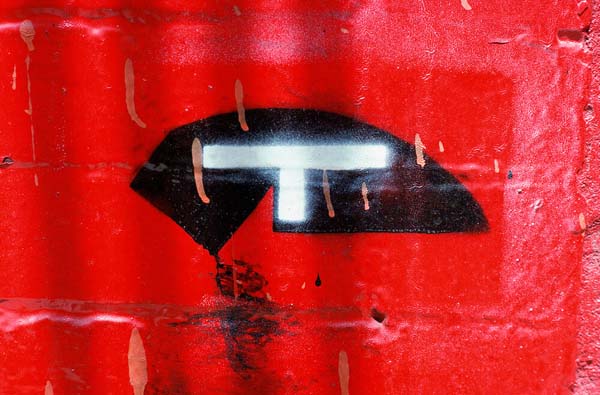 Ted Stamm, 31 Revisited Designators, 1979. Soho, New York. Ted Stamm Archive © 2021
Ted Stamm, 31 Revisited Designators, 1979. Soho, New York. Ted Stamm Archive © 2021
While on the topic of the 80’s and earlier, I asked Don if he owned any paintings by Ted Stamm. Stamm was an old friend of Don’s in the late 70’s and early 80’s; unfortunately Ted died at the age of 40. I never met Ted, but I knew he and Don were close friends. The reason I brought up Ted’s name was that I saw that the prestigious Lisson Gallery is now exhibiting Ted’s drawings and paintings. Don didn’t know that, but he said he had a small painting of Ted’s in his storage space. We tried to remember who had managed Ted’s estate, but couldn’t remember. Don remarked that Ted is gone, and who or what entity is benefitting from Ted’s estate, it’s not Ted.
This led us to a discussion of putting up with physical conditions, with Don talking about how hot it is in Corpus Christi. It was close to 100 degrees that Friday with high humidity. I confessed that I would not be able to take that kind of weather and would only be looking for the next air conditioned space.
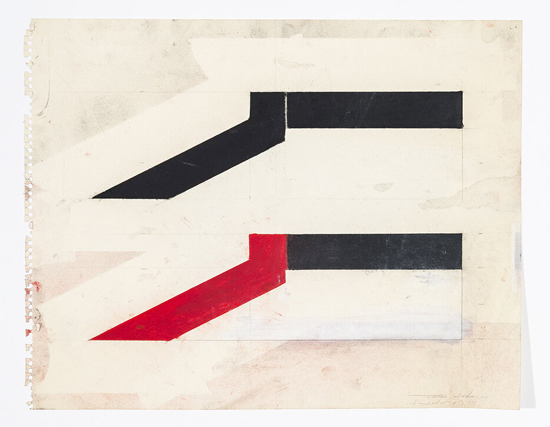 Ted Stamm, Lo Wooster 1979, mixed media on paper, Ted Stamm © 2021
Ted Stamm, Lo Wooster 1979, mixed media on paper, Ted Stamm © 2021
It seems that whenever Don and I talk about old friends and past art exhibitions, John Ford enters the conversation. John died in 1996 after he was hit by a car while on his way to his nightly drinking spot, The Ear Inn on Spring Street. John was also an accomplished painter with A Whitney Biennial under his belt and shows at distinguished California galleries, including the Daniel Weinberg Gallery. Everyone who knew John saw a very dynamic guy, always planning an exhibition, criticizing what he saw as bad art, and generally being outspoken.
The last big art exhibition John did, with Don as partner, was the Drop Dead Painting show in 1994. It was conceived as a statement of protest over a comment that the curator of that year’s Whitney Biennial, Elisabeth Sussman, made indicating that she did not want to select art for a Biennial, “That would display a lot of drop dead gorgeous painting.” This statement really offended John’s aspirations as an artist; he felt artists had to take action and stage an opposition show to display examples of drop dead gorgeous paintings.
New York City, in the late 70’s through to the early 90’s, had an alternative art movement that grew out of an artists’ culture developed in lower Manhattan below 14th Street. This alternative movement would take the form of independent shows in empty storefronts and also in spaces that defined themselves as alternative including 112 Greene Street and the 3 Mercer Street Store. Some of these shows premised themselves in opposition to what the Whitney Biennials displayed, which was understood by the downtown artists’ culture to be catering to an uptown establishment blue chip gallery scene. In other words, the Whitney was not showing the best art in New York City; The New Museum, the Alternative Museum, and Artists Space also shared this alternative perspective.
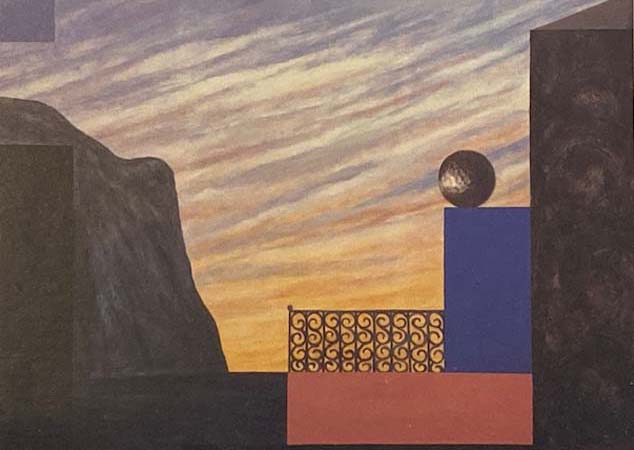 John Ford, Armada, 1991, oil on canvas
John Ford, Armada, 1991, oil on canvas
In opposition to Sussman’s Whitney Biennial, John and Don decided to organize an alternative exhibition: “Drop Dead Gorgeous Painting.” It was held in a second floor loft space on 103 Reade Street. and displayed the work of over thirty artists. It was a big success in the artists’ culture of downtown Manhattan, but I doubt if Elisabeth Sussman heard anything about it. Such was the nature of alternative exhibitions in those days, and it’s the same today; money and power control what the public will believe is important art. (I guess I’m not suppose to mention that.)
Don and I had a laugh about the truth of money controlling art and that got me to start talking about New York City as it is today, a time of fairly grim circumstances caused by the pandemic and all the complications it brings on. I remarked that living in New York City now is like a job – the job of living in New York. I described how crossing Eighth Avenue where I live is dangerous because of electric scooters, Citi Bikes, and electric skateboarders. We both laughed at that. (After all what’s a telephone conversation without complaints?)
Don didn’t have much to complain about in Corpus Christi. Walking along the seashore and taking in views along the Padre Islands sounded very luxurious to me. Not teaching and having the time to be a full time artist is something he looked forward to and now he has it. We agreed that artists don’t retire, they just get better.
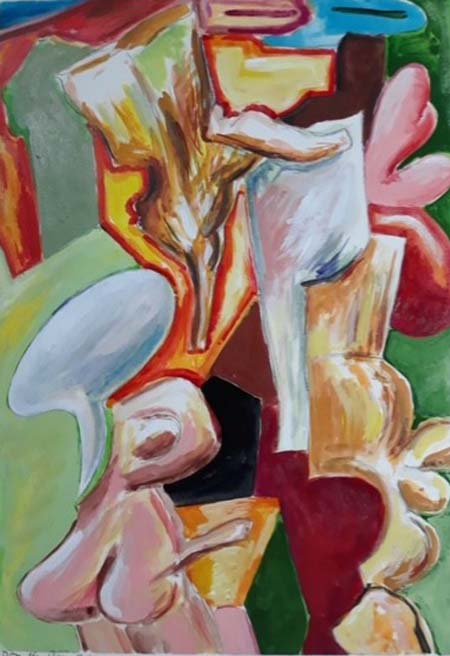 Dan Hazlitt, Untitled, 2021, gouache on canvas
Dan Hazlitt, Untitled, 2021, gouache on canvas
◊
Ron Morosan is an artist, writer, and curator. He has shown his work internationally at the American Pavilion of The Venice Biennale and the Circulo De Bellas Artes in Madrid, Spain. In the US he has shown at the New Museum and had a one-person exhibition at the New Jersey State Museum, and at numerous galleries in New York. He curated the Robert Dowd exhibition, Subversive Pop, at Center Galleries in Detroit, as well as Denotation, Connotation, Implication at Eisner Gallery, City University of New York. He has written catalogues for many artists, including Enid Sanford, Tom Parish, Robert Dowd, and others. In the 1990’s he started and ran B4A Gallery in Soho, New York, writing press releases, articles, and catalogues.
